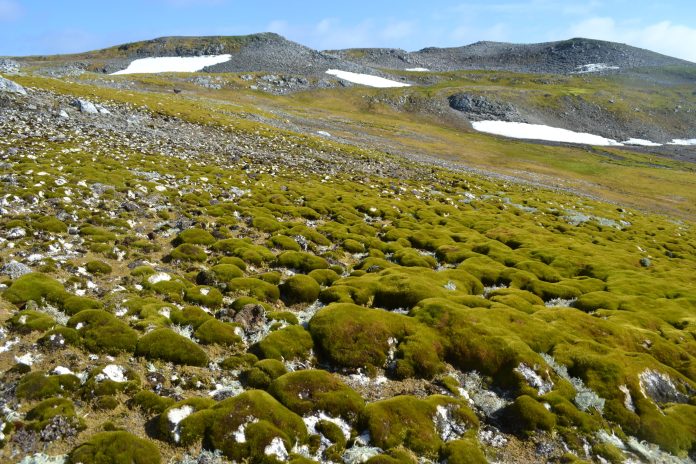Vegetation cover on the Antarctic Peninsula grew more than tenfold over the past few decades as the climate warmed, according to The Guardian.
Satellite data showed that the vegetation covered less than one square kilometre in 1986. However, by 2021, the green cover was almost 12 square kilometres, with the spread of plants, mainly mosses, accelerating since 2016.
The growth of vegetation on the icy continent is a sign that global warming is spreading to Antarctica. Scientists have warned that it could become a bridgehead for alien invasive species in the intact ecosystem.
Dr Thomas Roland, at the University of Exeter, UK, and who co-led the study, stated:
The Antarctic landscape is still almost entirely dominated by snow, ice and rock, with only a tiny fraction colonised by plant life. But that tiny fraction has grown dramatically – showing that even this vast and isolated wilderness is being affected by human-caused climate change.
The peninsula totals about 500,000 square kilometres. Greening has also affected the Arctic, with rain rather than snow falling on top of Greenland’s huge ice cap in 2021 for the first time in recorded history.
Prof Andrew Shepherd of Northumbria University also found evidence of greening caused by global warming.
This is a very interesting study and tallies with what I found when I visited Larsen Inlet [on the peninsula] a couple of years ago. We landed on a beach that was buried beneath the Larsen Ice Shelf until the shelf collapsed in 1986-88. We found it to now have a river with green algae growing in it! (…) It’s a barometer of climate change but also a tipping point for the region as life now has a foothold there.
The acceleration in the spread of mosses since 2016 coincides with the start of a remarkable decline in sea ice around Antarctica. Warmer open seas can lead to more humid conditions that favour plant growth, researchers say. Mosses can colonise bare rock, creating soil and conditions for other plants to grow.
Dr Olly Bartlett, at the University of Hertfordshire and also co-leader of the new study, said:
Soil in Antarctica is mostly poor or nonexistent, but this increase in plant life will add organic matter, and facilitate soil formation. This raises the risk of non-native and invasive species arriving, possibly carried by eco-tourists, scientists or other visitors to the continent.
Another study in 2022 found that two native Antarctic flowering plants spread on Signy Island, just north of the Antarctic Peninsula. The trees grew at the south pole several million years ago, when the planet’s atmosphere last had as much CO2 as it does now.
